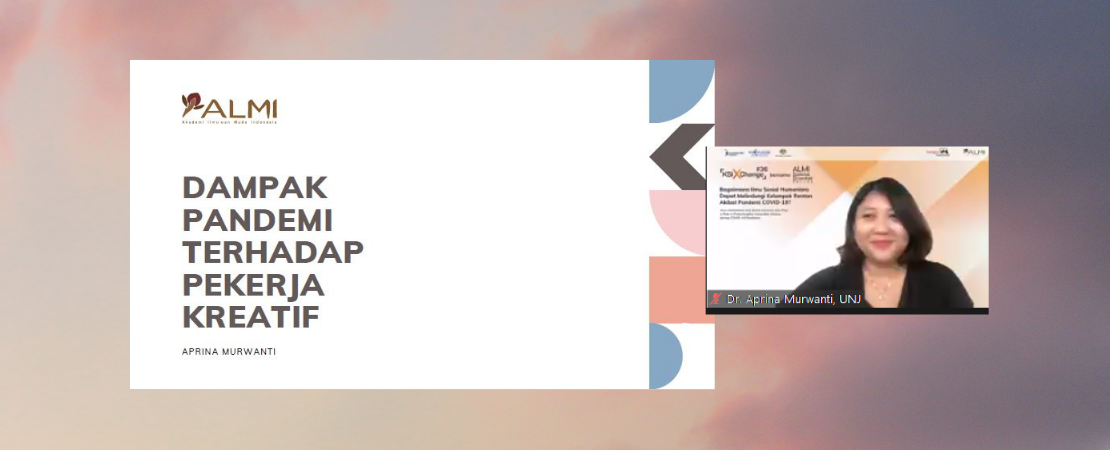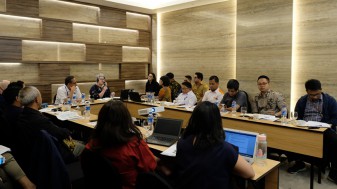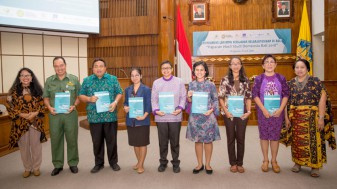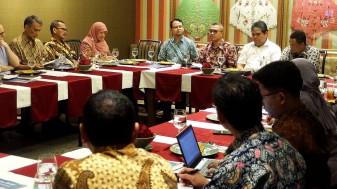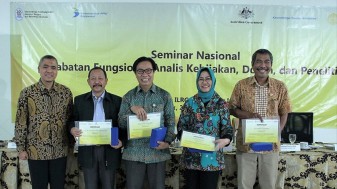The economic sustainability of creative industry actors has become uncertain during the pandemic. The lack of economic resources from events, programs, exhibitions, bazaars and other events due to government limitations on activities has added to the vulnerability of creative economy actors.
This theory was presented by Aprina Murwanti at the KSIxChange#36 event: ALMI Special Scientist Series, on Tuesday 21September. The forum, ‘How Social and Humanities Science Can Protect Vulnerable Groups from the Impact of the COVID-19 Pandemic’, was held by the Knowledge Sector Initiative (KSI) in collaboration with the Indonesian Young Academy of Science (ALMI).
Speakers at the forum presented the situation of vulnerable groups in Indonesia. In addition to Aprina, other speakers included an education researcher from the State University of Semarang (Universitas Negeri Semarang), Zulfa Sakhiyya, the Executive Director of Sajogyo Institute, Maksum Syam, a social, cultural and religious science researcher from the National Research and Innovation Agency (BRIN), Najib Burhani, an economic researcher from the University of Indonesia, Teguh Dartanto, and a health researcher from Hasannudin University (Universitas Hasannudin), Sudirman Nasir. Inaya Rakhmani and Evi Eliyanah from ALMI moderated the discussion. The event was broadcast on The Conversation Indonesia’s YouTube channel and was equipped with English and Bahasa Indonesia interpreters, as well as sign language interpreters.
Fading potential
Aprina said that the creative economic sector should have had bright prospects for the Indonesian economy. In 2019, for example, the value of the creative economic sector to Indonesia’s exports reached US$20 billion. “Before the pandemic, the government even projected that the creative economy (ekraf)’s contribution to GDP in 2020 should have reached IDR 1.274 trillion, with the potential to contribute 19.8 million jobs, if only the pandemic did not strike,” she said.
But the pandemic changed this projection, with the government recording 226,586 creative workers being affected. Aprina cited survey results from the Media Workers Union and Creative Industry for Democracy or Serikat Pekerja Media dan Industri Kreatif untuk Demokrasi (SINDIKASI) which show that of 139 respondents, 61.35 percent suffered from work or project cancellations. As many as 32.8 percent of respondents lost IDR 5 million to IDR 15 million in income from March to July 2020. “The situation got worse because many art communities and organizations still had to pay for overhead costs, such as rent, electricity and employee salaries,” she added.
Another issue is that creative workers are not protected by social insurance. Aprina cited a number of factors, including the assumption that creative workers are informal workers, without contracts, and are considered independent. They are also considered differently to white-collar and blue-collar workers. “This became an issue to grant social insurance mechanisms due to the difficulties conducting verification and certification,” she explained.
However, creative workers did not give in, and implemented coping strategies. The Tourism and Creative Economy Outlook 2020/2021 from the Ministry of Tourism and Creative Economy mentioned that changing events from offline to online had become one of their strategies. Based on the same data source, 75 percent of creative economy actors sought to obtain other skills during the pandemic, while almost 79 percent of creative economy actors practiced cost efficiency.
Other strategies included actively responding to competitors, changing business strategies, trying new projects, and bravely taking on other, completely new, activities. “But these were not so impactful as to be able to move the creative economic wheel like before, because the percentage of projects and events that were postponed or cancelled was still high,” Aprina explained.
Need to simplify assistance
The government has planned some assistance mechanisms to help workers in the creative economy sector, including cash transfers and cultural facilitation. However, there are problems with data collection and distribution aspects.
Aprina said problems included administrative aspects and overlapping authorities, which ended up limiting assistance. “For example, the Ministry of Tourism and Creative Economy only provided assistance for certain creative sub-areas, such as craft, film and animation, while other sub-areas were not given assistance.”
Aprina said that simplifying the administration for data collection and assistance could be a concrete solution. “For example, the grant provision, which was very rigid before because it can only be used to fund certain things, needs to be adjusted during the pandemic situation.”
In addition, how creative workers are viewed needs to change. Creative workers have become vulnerable due to the assumption that they can work flexibly, but this actually renders them vulnerable to exploitation.
Aprina emphasised the need for a multi-perspective approach to finding an appropriate solution to help creative workers face the pandemic. “Because the creative economic sector is the means to safeguarding the mental condition and cohesion of society amid this uncertain situation,” she said.

